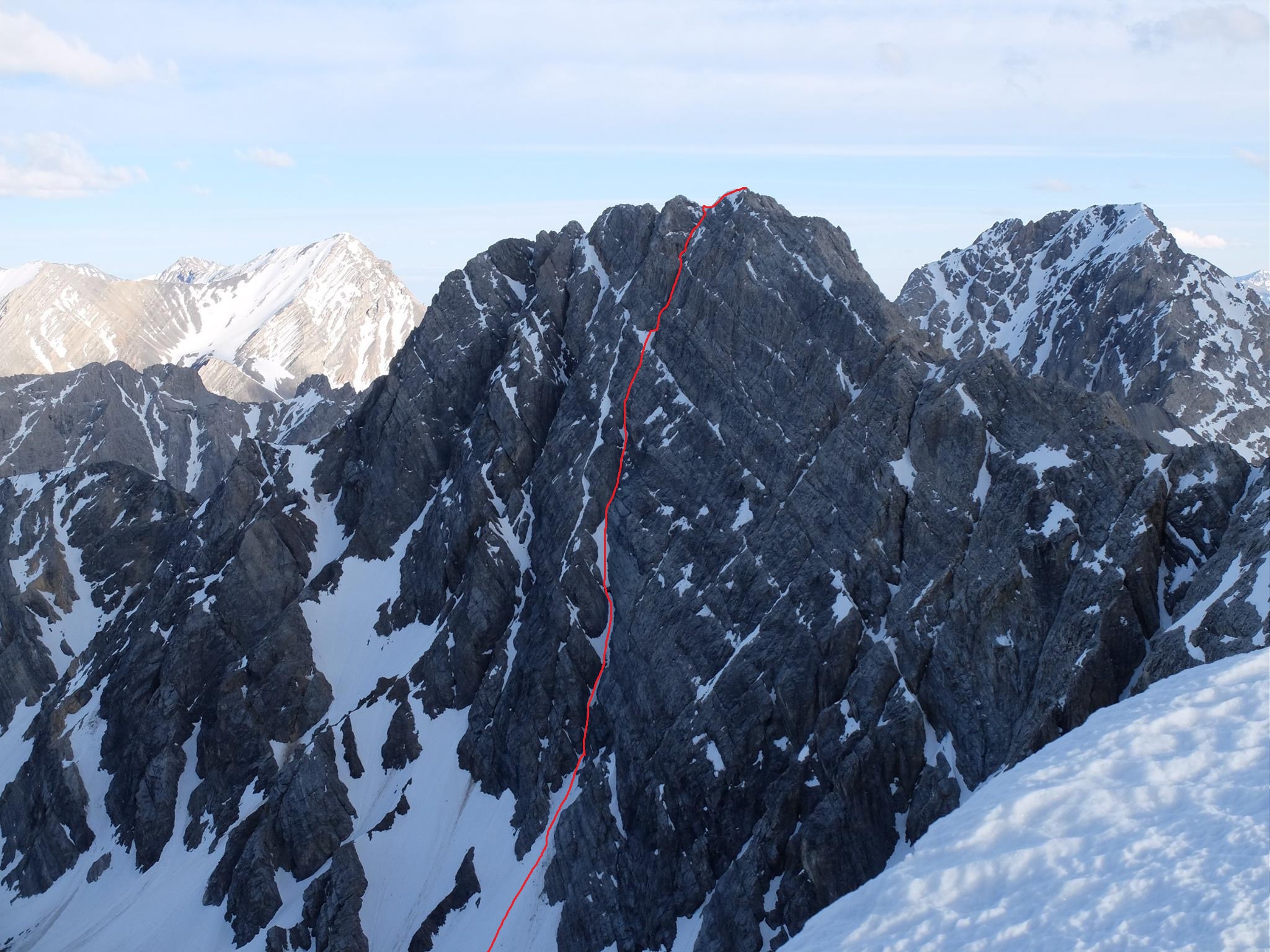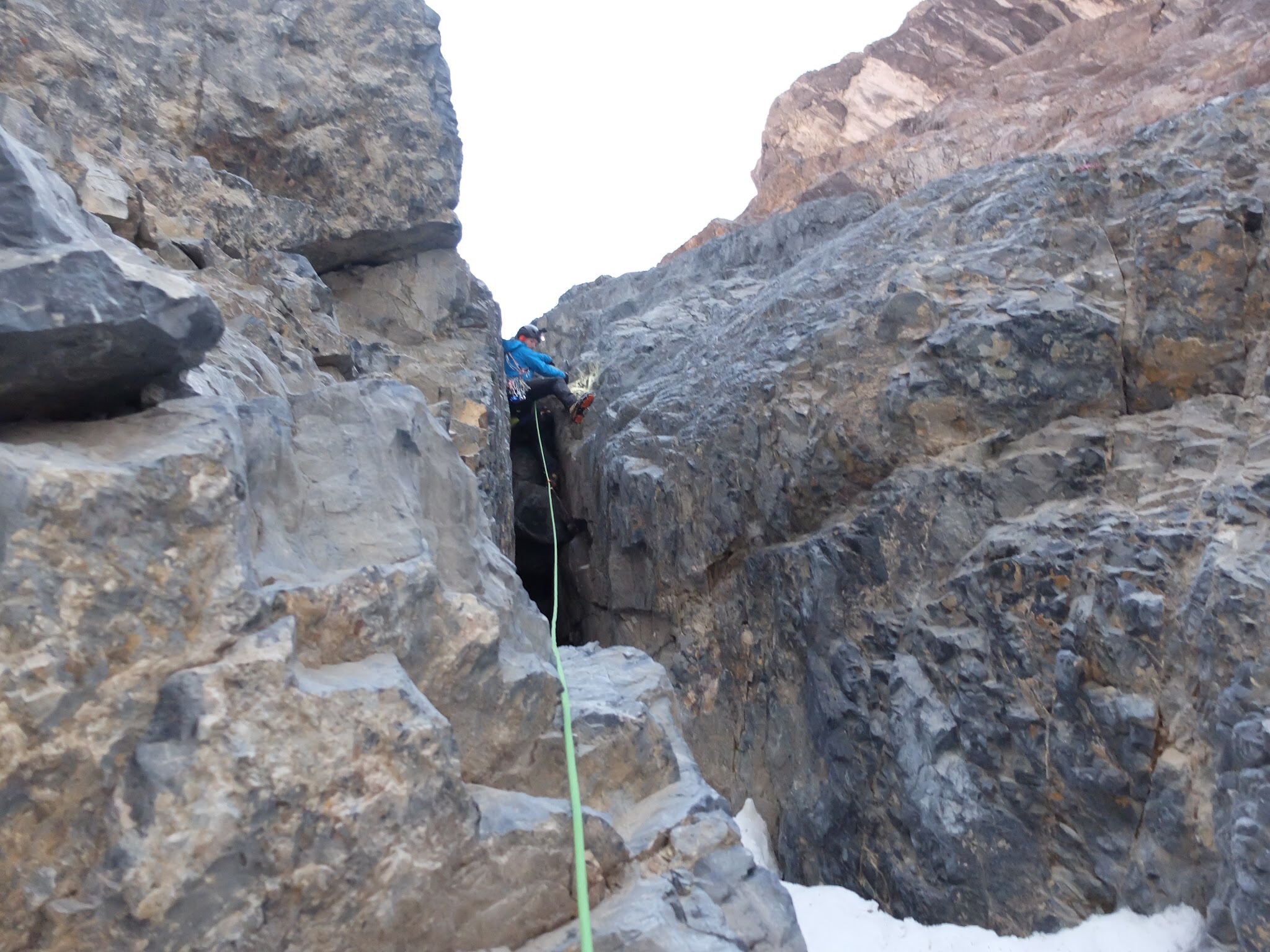Dallin Carey and I climbed a new route up the North Face of Sacajawea Peak on June 10, 2017 which we have named the Grand Central Couloir.
Pitch 1 (70 meters): About 3 chockstones to navigate, with the first one being about M5. A tight squeeze was necessary to get underneath one of the others. M5
Pitch 2 (80 meters): Long steep snow field with one big but relatively easy chockstone. Lack of anchor locations forced some simul-climbing. M3
Pitch 3 (70 meters): Narrow ice chimney under and over various chockstones. WI 3 or 4.
Pitch 4 (90 meters): Some steep snow and more narrow ice chimney. Lack of anchors forced a significant amount of simul-climbing. WI 3 or 4
Pitch 5 (20 meters): A short, steep snow slope to the base of Pitch 6.
Pitch 6 (50 meters): Steep, narrow ice chimney under a chockstone followed by a little face climbing to get around another large chockstone. Anchors were found about 15 meters up the steep snow after the technical climbing ended. This pitch was hard and awkward. There were good stances available to put in some deep ice screws, so we’re tentatively calling it WI 4 rather than WI5+, which is how we felt immediately after climbing it. WI 4 or 5, M3.
Pitch 7 (30 meters): Steep snow to the top, then a stones throw to the summit. Well protected.
Summary: We used ice screws and rock pro on every single pitch. Good pro was often hard to find, but it was always available to navigate the technical portions.






